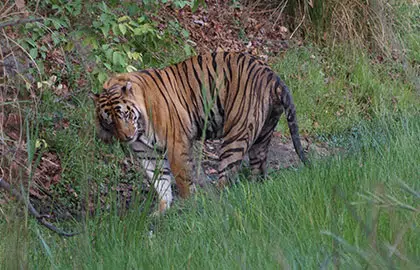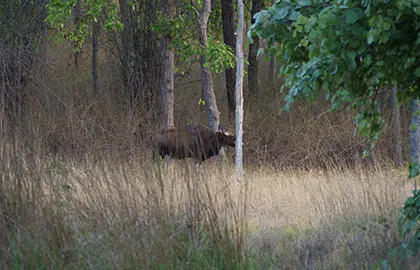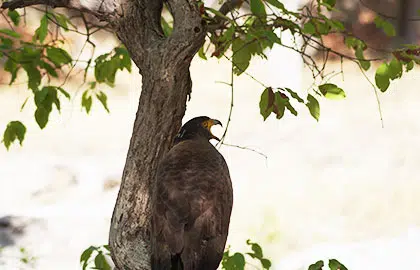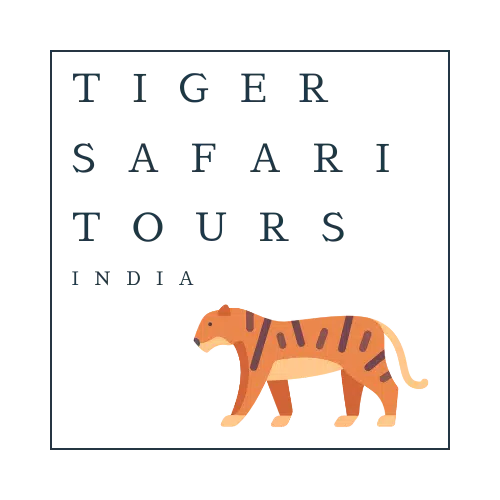Bandhavgarh National Park – Bandhavgarh Tiger Reserve
The Tiger Land
In bandhavgarh, if you see tiger just once it is hard luck.
Local Proverb
Overview
Bandhavgarh National Park is one of India’s most popular national parks, situated in the Umaria district of Madhya Pradesh. The park is spread over an enormous area of 1,536 square kilometers, with a sprawling biodiversity and stunning landscapes. The park was declared a tiger reserve in 1993 under the Project Tiger initiative of the Government of India. The park is chiefly famous for its density of tiger population that is considered to be one of the highest in India. The remarkable Royal Bengal tiger is the star attraction of the reserve and attracts plenty of tourists who come to witness this wild beast in its natural habitat.
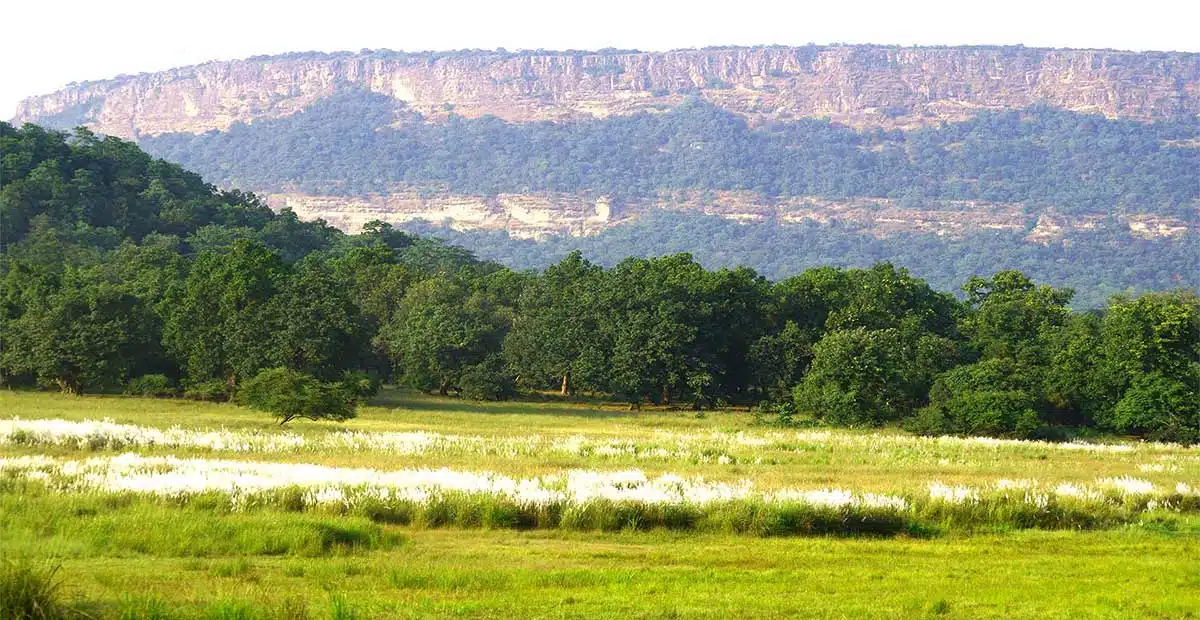
Information
Bandhavgarh National Park has a deep-rooted place in Indian mythology. It derives its name from a prominent hillock in the area, which was said to have been given by Rama, the Hindu lord, to his brother Lakshmana to keep a tight watch on Lanka (Ceylon). Hence the name Bandhavgarh, literally meaning “Brother’s Fort,” holds important significance for the devout population of India. The park contains at least 37 species of mammals, more than 250 species of birds, and a number of reptiles. The most prominent mammal species include the Royal Bengal tiger, leopard, dhole, Indian fox, sloth bear, gaur, and sambar.
- Size – 1,536 sq kms
- Forest type – Moist Mixed Deciduous Forest with the predominance of Sal
Star Species
The reserve has immense ecological significance as it is endowed with a rich variety of flora and fauna. Along with the rich diversity, Bandhavgarh also showcases numerous archeological wonders such as Bandhavgarh fort, various caves and rock paintings inside the protected area. The reserve is a perfect wildlife destination for tourists visiting India. You can significantly increase the level of your adventurous journey by staying in the resorts in Bandhavgarh National Park that offer luxurious accommodations for wildlife enthusiasts in order to make their excursion more fun filled and thrilling.
- Key Mammals – Royal Bengal tiger, leopard, dhole, Indian fox, sloth bear, gaur and sambar
- Key Birds – Asian Paradise Flycatcher, Black Naped Monarch, Common Rosefinch, Brown Fish Owl
How to reach
- By train – Umaria and Katni are the nearest railway stations from Bandhavgarh. Umaria railway station is about 35 kms from the reserve whereas Katni railway station is approximately 100 kms from Bandhavgarh National Park. One can then grab a cab or taxi outside the station to reach the reserve premises.
- By Air – Being predominantly a jungle area, Bandhavgarh does not have airport facility for mainstream flights. Umaria district has a small air strip for private charter planes. Jabalpur airport is the nearest airport facility to reach the park which is about 170 kms away. It has good air connectivity to major cities like Delhi, Mumbai, Bangalore, Kolkata, Hyderabad and Bhopal.
- By road – Bandhavgarh is well connected to major cities in Madhya Pradesh. It can be accessed from towns and cities such as Umaria (35kms), Katni (100kms), Shahdol (97 kms), Rewa (115kms) and Jabalpur (170kms). One can take a cab or taxi in order to reach Bandhavgarh National Park.
Safari
Every park is divided into 3 kinds of zones: Core, Buffer ad Reserved. Bandhavgarh has 3 core zones:
- Tala,
- Maghdi, and
- Khitauli.
Weather and Climate
| Month | Min. °C | Max. °C |
| Jan | 9 | 25 |
| Feb | 12 | 28 |
| Mar | 16 | 33 |
| Apr | 22 | 38 |
| May | 26 | 41 |
| Jun | 26 | 37 |
| Jul | 24 | 31 |
| Aug | 23 | 29 |
| Sept | 23 | 31 |
| Oct | 19 | 32 |
| Nov | 13 | 29 |
| Dec | 9 | 25 |
Things to Carry
Clothing Tips:
- DO NOT carry shiny/bright colored clothing. Instead, carry earthy colors like shades of dull green or olive green, beige, and grey. Black is also avoidable as it attracts mosquitos.
- Carry comfortable, breathable clothes (cotton) in summer.
- Carry layers (4-5) of thin woolen clothes rather than one heavy jacket for winter. Layers are a lot more helpful through the varying temperatures during the day.
- Carry a wind cheater/rain coat just in case there is a light shower.
- Carry a Cap/Hat during summer.
- Avoid wearing strong perfume while on safari. Animals have a strong sense of smell and it may distract them.
Gallery
